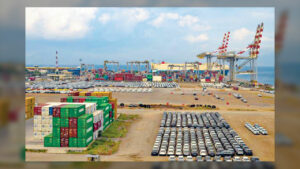
15 more Luzon Corridor projects pitched
FIFTEEN more projects were presented to the steering committee for the Luzon Economic Corridor last week, according to the Office of the Special Assistant to the President for Investment and Economic Affairs (OSAPIEA).
“In the second steering committee meeting, we presented more projects, again, but from different agencies,” Secretary Frederick D. Go, the SAP who heads OSAPIEA, said on the sidelines of the Franchise Asia Philippines 2024 conference.
During the first steering committee meeting, the Philippines presented projects from the Bases Conversion and Development Authority, National Economic and Development Authority, and the Department of Transportation.
“In the second steering committee meeting, we added projects from Subic Bay Metropolitan Authority (SBMA), the Department of Energy (DoE), and the Department of Public Works and Highways (DPWH),” Mr. Go said.
With the additional 15 projects, the Philippines has so far presented 43 Luzon Corridor works to the steering committee.
“But the idea now is they have seen all of it, and they are going to narrow it down. I really think at the end of the day, the ideal number should only be around five or six,” he said.
“Because you know what happens in life when you have too many choices … (compared) to when you have narrow choices, then you can really focus and really move faster,” he added.
He said infrastructure projects are likely to top the priority list, with energy projects next in line.
“But we don’t know … It’s their choice. Let’s leave it to them to choose,” he said.
The steering committee for the Luzon Economic Corridor is set to hold its third meeting in November.
The Luzon Economic Corridor is the first project of the US-initiated Partnership for Global Infrastructure and Investment in the Indo-Pacific.
First announced after the Trilateral Economic Ministers Meeting between the Philippines, the US, and Japan in April, the initiative aims to enhance the connectivity of the island’s major economic engines like Subic Bay, Clark, Metro Manila, and Batangas. — Justine Irish D. Tabile



